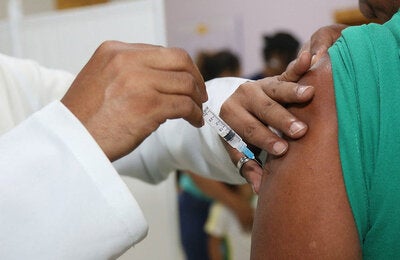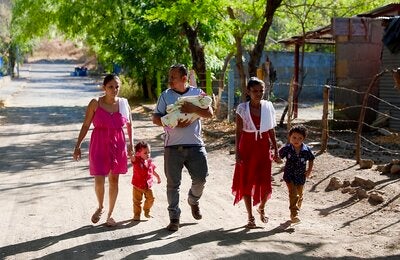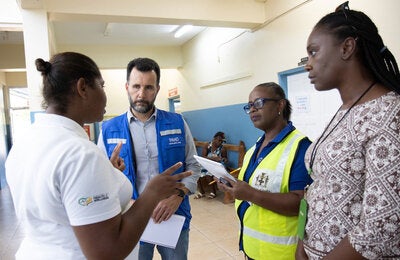Press Briefing on Cholera Outbreak in Haiti
Jon Kim Andrus,
MD Deputy Director
Pan American Health Organization
27 October 2010
Good afternoon. Thank you for again taking the time to come to this press briefing on Haiti.
Haiti's cholera epidemic continues to spread and produce more cases. As of this morning, the Ministry of Health is reporting 4,147 cases of cholera and 292 deaths. Departments reporting cases include: Arbonite, Central, Ouest. Suspect cases are also being investigated in Nord, Nordouest, and Nordest.
As I emphasized in Monday's press conference, you will hear different numbers from different sources, but these numbers are the latest data from the Haitian Ministry of Health as of this morning.
Today I would like to focus my remarks on the national strategy that will guide actions by Haiti's Ministry of Health and its partners in responding to the cholera epidemic.
The Ministry of Health presented this strategy to all its international partners in Haiti, including members of the UN Health Cluster. It was developed in close collaboration with PAHO and other UN agencies as well as major nongovernmental and bilateral partners.
The strategy prioritizes measures to protect families at the community level. strengthen primary health care centers already operating across the nation, and establish a network of special Cholera Treatment Centers and designated hospitals for treatment for severe cases.
In summary, the strategy is aimed at minimizing the number of cases, and for those who are already infected, providing treatment to minimize the number of deaths.
To provide protection for families, health officials and partners are continuing to distribute oral rehydration salts-these life-saving salts--directly in communities. These have been developed and used over the last decades to save millions of children's lives around the world.
This simple treatment can be administered at home and is usually adequate to treat and prevent complications for about 80 percent of cases.
The strategy also calls for disseminating messages over the radio and TV, via community health workers and leaders, and over loudspeakers mounted on trucks and other vehicles.
These community-based messages encourage hand washing and sanitation measures such as proper management of human feces and garbage, purification of drinking water by boiling or using chlorination tablets, and eating only cooked foods or peeled foods.
The messages also describe how to prepare oral rehydration salts and how to care for cholera patients safely in the home and when to take them to a health facility.
The Ministry of Health is also sending community health aides into poor and densely populated areas, including temporary settlement areas that were created after the earthquake, to actively seek out and refer the sickest people to the Cholera Treatment Centers, while at the same time giving them a first dose of oral rehydration salts.
They will also supervise measures in the local communities and neighborhoods to ensure clean drinking water and that proper waste disposal and maintenance of latrines is being done.
More than 60 community health aides are in the process of being deployed to the temporary settlement camps that were set up after the earthquake.
The community health aides are intended to support and complement the many Red Cross community health aides that are already working in the country on the ground.
The Ministry also will be establishing a network of community health posts, with the idea of having 1 post for every 25 families, that will have the capacity to treat diarrhea.
The overall strategy is aimed to strengthen primary health care centers across the country with 24/7 coverage, and to build new structures in addition to 33 designated hospitals nationwide that will serve as Cholera Treatment Centers for the most severe cases.
Assessments have already been done in 8 hospitals to determine what they need in support of this action.
To support the Ministry of Health's planning efforts-and also the Dominican Republic's contingency planning-PAHO has been working with the Centers for Disease Control and Prevention (CDC) to develop projections of cases, estimates of cases, based on different modeling scenarios.
Those estimates will help with planning efforts. It is impossible, however, to predict the course of the epidemic, even with the best modeling.
PAHO and CDC experts are also working together on improved surveillance and reporting of cases, analysis of water samples from rivers and other water sources, monitoring of antibiotic resistance, and development of clinical management guidelines, for example, how to treat adults, children and pregnant women.
You will find updated information on PAHO's website at www.paho.org.
I will stop there and answer any questions that you may have.



